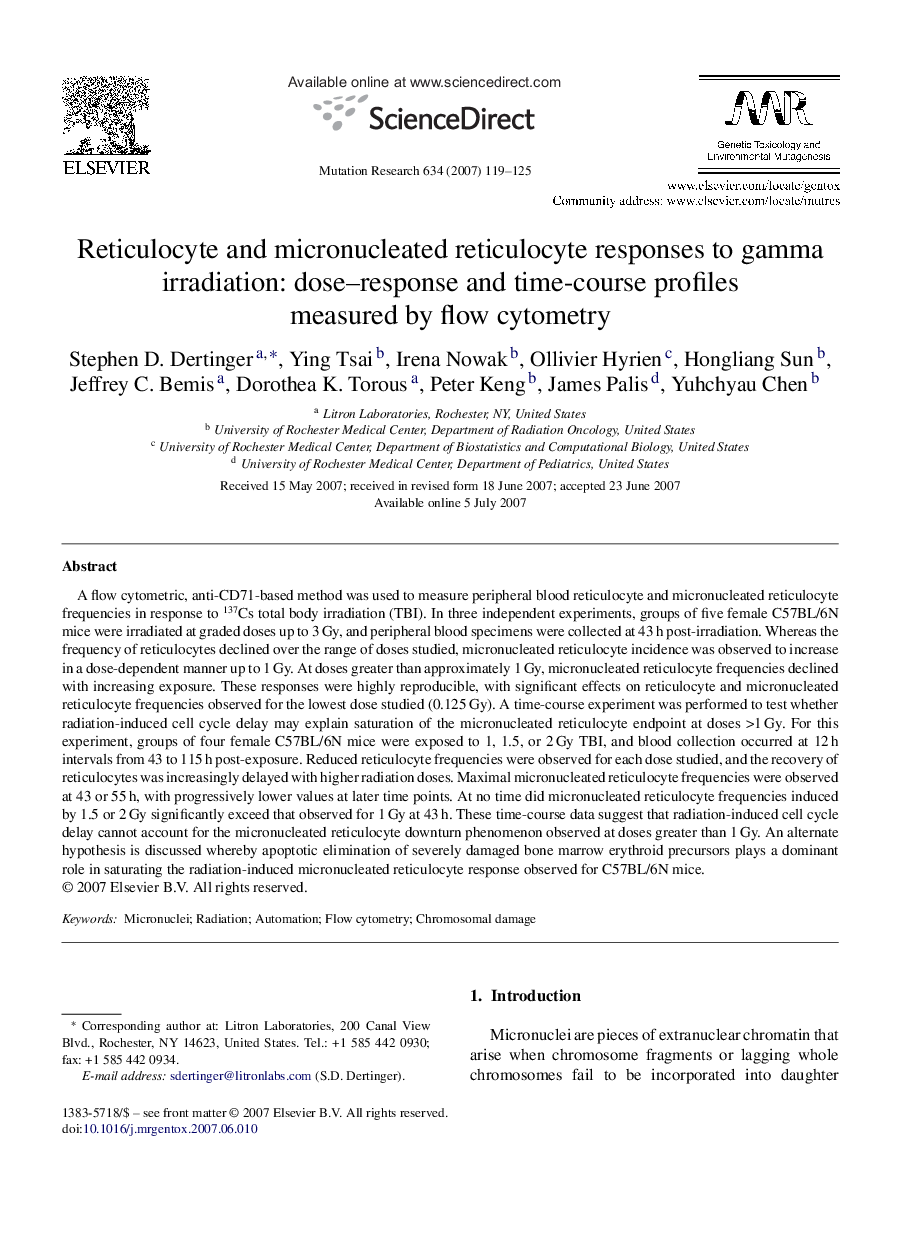| Article ID | Journal | Published Year | Pages | File Type |
|---|---|---|---|---|
| 2149054 | Mutation Research/Genetic Toxicology and Environmental Mutagenesis | 2007 | 7 Pages |
A flow cytometric, anti-CD71-based method was used to measure peripheral blood reticulocyte and micronucleated reticulocyte frequencies in response to 137Cs total body irradiation (TBI). In three independent experiments, groups of five female C57BL/6N mice were irradiated at graded doses up to 3 Gy, and peripheral blood specimens were collected at 43 h post-irradiation. Whereas the frequency of reticulocytes declined over the range of doses studied, micronucleated reticulocyte incidence was observed to increase in a dose-dependent manner up to 1 Gy. At doses greater than approximately 1 Gy, micronucleated reticulocyte frequencies declined with increasing exposure. These responses were highly reproducible, with significant effects on reticulocyte and micronucleated reticulocyte frequencies observed for the lowest dose studied (0.125 Gy). A time-course experiment was performed to test whether radiation-induced cell cycle delay may explain saturation of the micronucleated reticulocyte endpoint at doses >1 Gy. For this experiment, groups of four female C57BL/6N mice were exposed to 1, 1.5, or 2 Gy TBI, and blood collection occurred at 12 h intervals from 43 to 115 h post-exposure. Reduced reticulocyte frequencies were observed for each dose studied, and the recovery of reticulocytes was increasingly delayed with higher radiation doses. Maximal micronucleated reticulocyte frequencies were observed at 43 or 55 h, with progressively lower values at later time points. At no time did micronucleated reticulocyte frequencies induced by 1.5 or 2 Gy significantly exceed that observed for 1 Gy at 43 h. These time-course data suggest that radiation-induced cell cycle delay cannot account for the micronucleated reticulocyte downturn phenomenon observed at doses greater than 1 Gy. An alternate hypothesis is discussed whereby apoptotic elimination of severely damaged bone marrow erythroid precursors plays a dominant role in saturating the radiation-induced micronucleated reticulocyte response observed for C57BL/6N mice.
